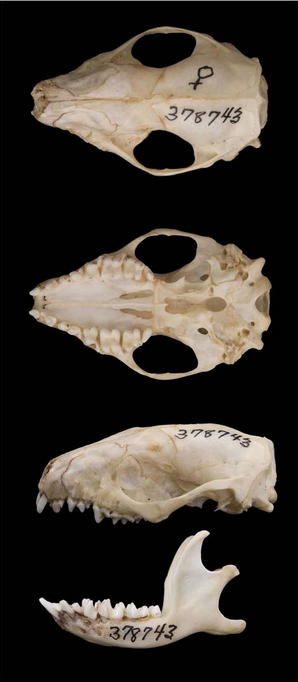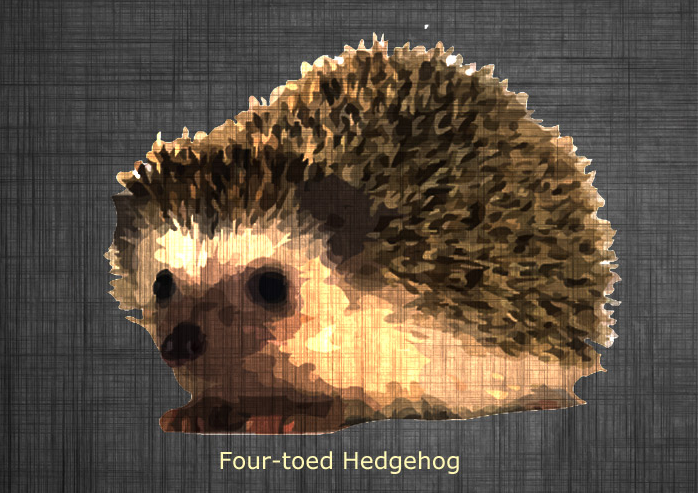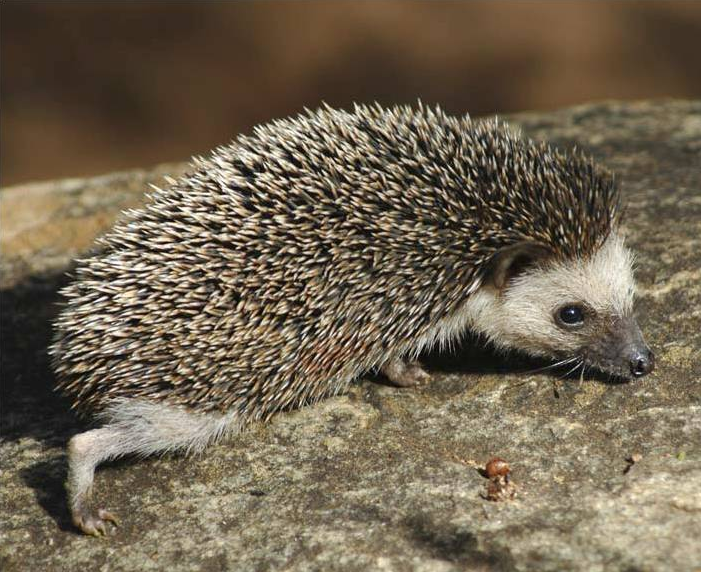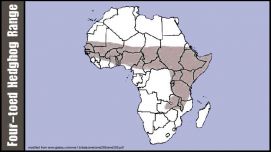The African Pygmy Hedgehog
Atelerix albiventris
The Smallest African Hedgehog – A General Description
The African pygmy hedgehog is one of 23 extant (currently living) hedgehogs in the world. Sometimes called the four-toed hedgehog, it is the smallest member of the hedgehog family. The African pygmy hedgehog is covered in tiny, non-barbed spines. These spines are different from the spines on a porcupine as they are permanently embedded in the skin of the animal and are not shed. The movement of these spines is controlled by the contraction of a muscular ‘bag’ called the orbicularis panniculi, and the curling behavior is aided by special morphological adaptations, such as having short, blunt ridges on the vertebrae and a wide pelvis.
Atelerix has a generalized body plan and, like most insectivores, a small brain and a simple gastrointestinal system. They have blunt, broad molars and a relatively low metabolic rate that is attributed to their largely insectivorous diet.
Where is the Four-toed Hedgehog found?
Hedgehogs can be found on the continents of Africa, Asia, and Europe. Atelerix is widely encountered in savanna and steppe zones of equatorial Africa from Senegal to Ethopia and south to the Zambezi River, and it is sporadically found in drier regions of Africa.
 They occupy a variety of habitats, including grasslands, woodlands, bush, thickets, plains, agricultural land, and even suburban gardens (they have also been encountered in stables and food storage buildings in suburban areas and areas where livestock are kept, which attract insects). Atelerix prefers elevations at or below 2000 meters and require areas with dry soils; they are not encountered in marshes or dense forests. Important habitat features include a plethora of shelters to choose from (they usually change their resting site each day), including matted grass, leaf litter, rocky crevices, termitaries (termite mounds), or previously-dug burrows. They tend to prefer grassy areas with light undergrowth.
They occupy a variety of habitats, including grasslands, woodlands, bush, thickets, plains, agricultural land, and even suburban gardens (they have also been encountered in stables and food storage buildings in suburban areas and areas where livestock are kept, which attract insects). Atelerix prefers elevations at or below 2000 meters and require areas with dry soils; they are not encountered in marshes or dense forests. Important habitat features include a plethora of shelters to choose from (they usually change their resting site each day), including matted grass, leaf litter, rocky crevices, termitaries (termite mounds), or previously-dug burrows. They tend to prefer grassy areas with light undergrowth.
Behavior
The four-toed hedgehog is solitary and only comes together with conspecifics (animals of the same species) during the breeding season. These animals are territorial and will engage in aggressive behavior if their territory is encroached upon. In a territorial attack, the animal will erect the spines around its head and snort, grunt, hiss, and butt heads with the offending individual. Spines are also used as a defensive mechanism when evading predators; the hedgehog’s first line of defense is to roll up into a ball, spines erect at opposing angles forming a protective barrier around the animal. Atelerix has been known to attack predators by erecting its spines and lunging at its attacker.
African pygmy hedgehogs are primarily nocturnal but can be crepuscular (active at dawn and dusk). During extreme weather conditions, they will aestivate (a form of summer hibernation initiated by extreme heat whereby they will go into hiding, lower their metabolic rate, and subsist off of fat reserves until environmental conditions improve).
Vocalizations include a repertoire of snorts, hisses, grunts, and twitters. During courtship, males serenade females with a birdlike call, and she will respond with hisses, snorts, and evasive movements.
Like all hedgehogs, the African pygmy exhibits an interesting behavior known as self-anointing. This curious behavior usually occurs when the animal encounters an irritating substance; the hedgehog forming a bubbly foam substance in its mouth and subsequently rubs the mixture over its spines. One individual was observed chewing the parotid glands of a toad and self-anointing with the toxic mixture (perhaps a defense against predators?). The true reason for self-anointing is still unknown to scientists, but it has been hypothesized that it is used to attract attention, males from females and juveniles from their mother. Although its specific origin is unknown, scientists know that this is an innate (instinctual) behavior as it has been observed in juveniles whose eyes have not yet opened.
Reproduction
African pygmy hedgehogs have no apparent mating season and breed throughout the year. They become sexually mature at approximately one year of age. Gestation lasts 30 to 40 days and litters range in size from two to ten young with females typically having one litter per year. Neonates (babies) are born blind and naked; white spines emerge after two to three days. Between 8 and 18 days, the eyes will open and the white, infant spines are shed and replaced with spines of the adult coloration. At 40 days the young will accompany the mother on foraging trips and will eat increasing amounts of solid foods until they are completely weaned.
What’s on the menu for a hedgehog?
The four-toed hedgehog is an insectivore and primarily eats insects (termites, beetles) and other arthropods (spiders, scorpions, millipedes). They do consume a variety of other foods as well, including invertebrates (snails, earthworms, slugs, land crabs) small vertebrates (snakes, lizards, frogs, young birds, and eggs) and plant material (roots, fruits, fungi). Some have even been observed consuming venomous snakes!
Prey is typically located by sight, scent, and sound and can be located as far as 4 cm deep in the soil. Live prey is snapped up into the mouth and chewed noisily followed by muzzle licking. Larger live prey is shaken to death before consumption. Atelerix will readily consume carrion, and in suburban areas, they have been observed scavenging road killed carcasses.
Conservation Status
The IUCN (International Union for Conservation of Nature) lists the African pygmy hedgehog as “lower risk-least concern.” These animals are common in areas of suitable habitat but not often seen due to their nocturnal habits.
More Resources
Four-toed hedgehogs are common exotic pets and are widely bred in captivity. To learn more about this interesting critter, we encourage you to check out the following link:
Related Topics
The Smallest African Hedgehog – A General Description
The African pygmy hedgehog is one of 23 extant (currently living) hedgehogs in the world. Sometimes called the four-toed hedgehog, it is the smallest member of the hedgehog family. The African pygmy hedgehog is covered in tiny, non-barbed spines. These spines are different from the spines on a porcupine as they are permanently embedded in the skin of the animal and are not shed. The movement of these spines is controlled by the contraction of a muscular ‘bag’ called the orbicularis panniculi, and the curling behavior is aided by special morphological adaptations, such as having short, blunt ridges on the vertebrae and a wide pelvis.
Atelerix has a generalized body plan and, like most insectivores, a small brain and a simple gastrointestinal system. They have blunt, broad molars and a relatively low metabolic rate that is attributed to their largely insectivorous diet.
Where is the Four-toed Hedgehog found?
Hedgehogs can be found on the continents of Africa, Asia, and Europe. Atelerix is widely encountered in savanna and steppe zones of equatorial Africa from Senegal to Ethopia and south to the Zambezi River, and it is sporadically found in drier regions of Africa.
 They occupy a variety of habitats, including grasslands, woodlands, bush, thickets, plains, agricultural land, and even suburban gardens (they have also been encountered in stables and food storage buildings in suburban areas and areas where livestock are kept, which attract insects). Atelerix prefers elevations at or below 2000 meters and require areas with dry soils; they are not encountered in marshes or dense forests. Important habitat features include a plethora of shelters to choose from (they usually change their resting site each day), including matted grass, leaf litter, rocky crevices, termitaries (termite mounds), or previously-dug burrows. They tend to prefer grassy areas with light undergrowth.
They occupy a variety of habitats, including grasslands, woodlands, bush, thickets, plains, agricultural land, and even suburban gardens (they have also been encountered in stables and food storage buildings in suburban areas and areas where livestock are kept, which attract insects). Atelerix prefers elevations at or below 2000 meters and require areas with dry soils; they are not encountered in marshes or dense forests. Important habitat features include a plethora of shelters to choose from (they usually change their resting site each day), including matted grass, leaf litter, rocky crevices, termitaries (termite mounds), or previously-dug burrows. They tend to prefer grassy areas with light undergrowth.
Behavior
The four-toed hedgehog is solitary and only comes together with conspecifics (animals of the same species) during the breeding season. These animals are territorial and will engage in aggressive behavior if their territory is encroached upon. In a territorial attack, the animal will erect the spines around its head and snort, grunt, hiss, and butt heads with the offending individual. Spines are also used as a defensive mechanism when evading predators; the hedgehog’s first line of defense is to roll up into a ball, spines erect at opposing angles forming a protective barrier around the animal. Atelerix has been known to attack predators by erecting its spines and lunging at its attacker.
African pygmy hedgehogs are primarily nocturnal but can be crepuscular (active at dawn and dusk). During extreme weather conditions, they will aestivate (a form of summer hibernation initiated by extreme heat whereby they will go into hiding, lower their metabolic rate, and subsist off of fat reserves until environmental conditions improve).
Vocalizations include a repertoire of snorts, hisses, grunts, and twitters. During courtship, males serenade females with a birdlike call, and she will respond with hisses, snorts, and evasive movements.
Like all hedgehogs, the African pygmy exhibits an interesting behavior known as self-anointing. This curious behavior usually occurs when the animal encounters an irritating substance; the hedgehog forming a bubbly foam substance in its mouth and subsequently rubs the mixture over its spines. One individual was observed chewing the parotid glands of a toad and self-anointing with the toxic mixture (perhaps a defense against predators?). The true reason for self-anointing is still unknown to scientists, but it has been hypothesized that it is used to attract attention, males from females and juveniles from their mother. Although its specific origin is unknown, scientists know that this is an innate (instinctual) behavior as it has been observed in juveniles whose eyes have not yet opened.
Reproduction
African pygmy hedgehogs have no apparent mating season and breed throughout the year. They become sexually mature at approximately one year of age. Gestation lasts 30 to 40 days and litters range in size from two to ten young with females typically having one litter per year. Neonates (babies) are born blind and naked; white spines emerge after two to three days. Between 8 and 18 days, the eyes will open and the white, infant spines are shed and replaced with spines of the adult coloration. At 40 days the young will accompany the mother on foraging trips and will eat increasing amounts of solid foods until they are completely weaned.
What’s on the menu for a hedgehog?
The four-toed hedgehog is an insectivore and primarily eats insects (termites, beetles) and other arthropods (spiders, scorpions, millipedes). They do consume a variety of other foods as well, including invertebrates (snails, earthworms, slugs, land crabs) small vertebrates (snakes, lizards, frogs, young birds, and eggs) and plant material (roots, fruits, fungi). Some have even been observed consuming venomous snakes!
Prey is typically located by sight, scent, and sound and can be located as far as 4 cm deep in the soil. Live prey is snapped up into the mouth and chewed noisily followed by muzzle licking. Larger live prey is shaken to death before consumption. Atelerix will readily consume carrion, and in suburban areas, they have been observed scavenging road killed carcasses.
Conservation Status
The IUCN (International Union for Conservation of Nature) lists the African pygmy hedgehog as “lower risk-least concern.” These animals are common in areas of suitable habitat but not often seen due to their nocturnal habits.
More Resources
Four-toed hedgehogs are common exotic pets and are widely bred in captivity. To learn more about this interesting critter, we encourage you to check out the following link:



































































































